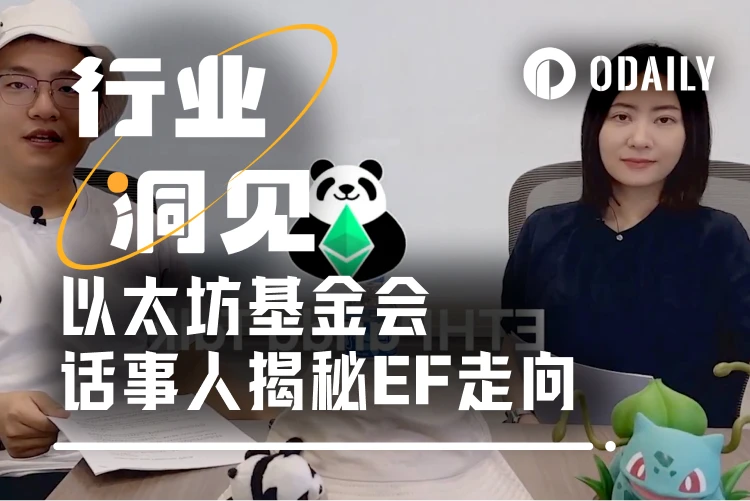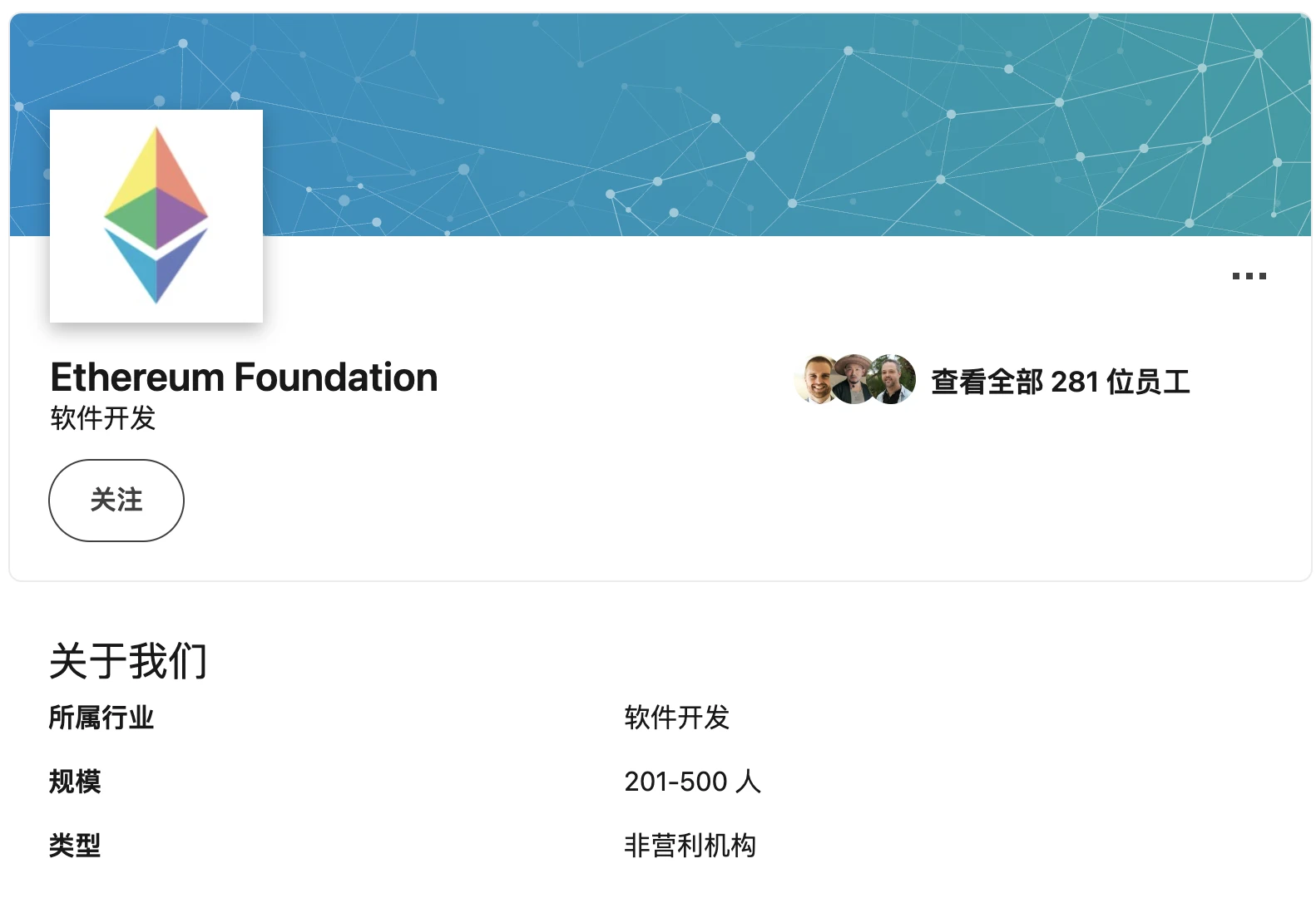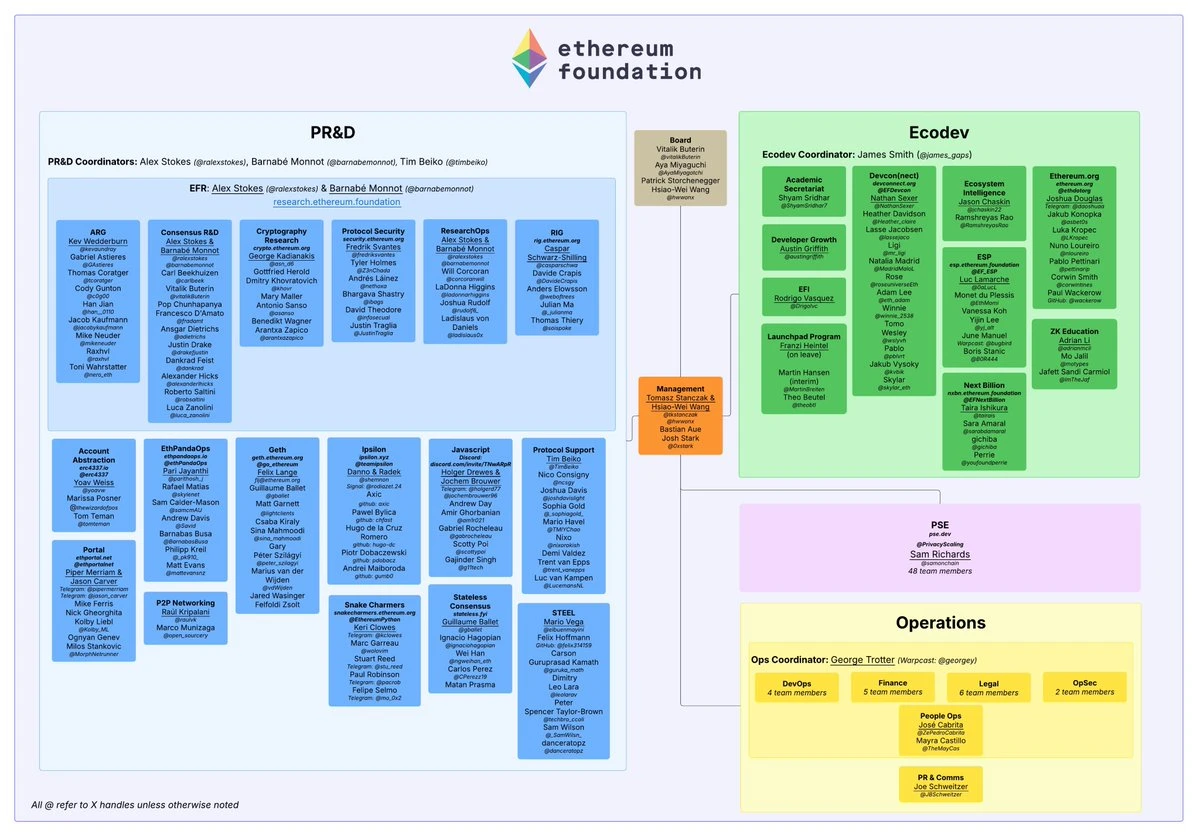Original|Odaily Planet Daily (@OdailyChina)

With the price of ETH rising and breaking through $2700, loyal E guardians are once again moved to tears, even though their entry price may have been $3000 or even higher. As the official core role of the Ethereum ecosystem, the Ethereum Foundation (hereinafter referred to as EF) undoubtedly captures everyone's attention with its every move. Recently, EF Executive Director Hsiao-Wei Wang shared some of her views and plans regarding the future development of EF during an offline interview with Bruce Xu, a co-founder of ETF Panda. In this article, Odaily Planet Daily will summarize the potential future development of EF based on this interview.
Key Point One: What are the potential explosive applications and exploratory application areas in the Ethereum ecosystem?
When asked about which application areas in the Ethereum ecosystem might experience an explosion and which directions are still being explored, Hsiao-Wei Wang responded, "Recently, I find the aspects of identity and SocialFi quite interesting. For example, a mini-program in the Farcaster ecosystem allows you to see the games your friends are playing and supports quick sharing. Although it may take some time to explode, it is relatively easier to penetrate into the daily lives of ordinary users and quickly find its user base. As for large projects, they still tend to lean towards financial-related products, such as innovations in DeFi; additionally, RWA should also belong to the application category, and its future development is worth looking forward to."
Overall, Wang's response was quite standard, indicating that EF does not have a particularly clear support plan or promotion strategy for the subsequent application layer development of the Ethereum ecosystem, which is the biggest shortcoming of the Ethereum ecosystem compared to the commercial application development logic of the Solana ecosystem.
Key Point Two: What is the internal organizational structure of EF?
Regarding the organizational structure of EF, Wang stated, "The general structure of EF includes: first, the Board of Directors, then the Management Team, under which there are three business clusters, which are not strictly defined departments.
The first is the Operation department, which includes Finance, HR, and Legal, which are necessary for the daily operations of a company or foundation;
The second is the Development department, which focuses mainly on Protocol R&D after some recent significant spin-offs, and the Research Team is also part of this development department.
The third is the Eco Dev department, which is related to ecological development, and this part may include departments that issue grants like ESP and Next Billion Fellowship."
Additionally, it is worth mentioning that according to the LinkedIn interface, the number of active members under EF is 281, making it a medium-sized organization.

EF official organizational member interface
In response to the community's concern about "whether EF has its own marketing department," Wang directly replied, "As Josh Stark said, Ethereum doesn’t have a BD team, Ethereum has one hundred BD teams (Odaily Planet Daily translation: The Ethereum official does not have a business development team, but the Ethereum ecosystem has countless BD teams). Other applications, whether Layer 2 or some Dapps, have their BD teams, which are also like our BD teams. We do not view Ethereum as a brand of our own. For example, on Twitter, we have recently made some account transitions. Since the beginning of this year, there is now an Ethereum account and an Ethereum Foundation account. I think separating them is quite good because previously, whenever we wanted to post something using the Ethereum account, everyone seemed to think it represented the foundation, which was very limiting. Now we use this account to do BD-like activities, to help the community understand what major events are happening; anyway, I think this separation is great, and both accounts can be utilized effectively."

EF internal organizational structure chart
Key Point Three: What are the potential future funding flows for EF?
Regarding the community's long-standing concern about "EF's funding operation model and potential funding input channels," Wang responded, "This year, the foundation has started to actively participate in DeFi. In early February, we had a wave of deployments, and we began to try ETH DeFi Lending, with a second phase also planned. We are evaluating whether to increase our investment in Lending or explore more creative ways to utilize ETH assets;
The second major area is Staking. We are also exploring different Staking Options while considering whether EF's participation in Staking can bring positive benefits;
The third point is still in the exploratory stage, which is Tokenization, such as participating in some RWA. Our participation mainly involves some relatively conservative funds or funds that are favorable to L1."
In simple terms, perhaps influenced by Vitalik and EF members' indifference to the speculative hype of DeFi, currently, EF's sources of income remain quite limited, but the consistently poor market price performance of ETH and the widespread complaints from the community have pushed EF to take new steps, attempting more diversified operations to generate revenue.
Key Point Four: What are the reasons behind EF's previous token selling operations?
In simple terms, for survival.
Regarding the community's keen interest in the "selling of 100 ETH in small amounts," Wang responded, "For us, it was a necessity to sell because we currently have two to three hundred people in the foundation, about 75% of our expenses need to be paid in fiat currency, and 25% in crypto.
So the first point is that the foundation needs to operate, which requires asset rebalancing.
The second point is that our community may not be fully aware of this need, and we will strengthen communication on this.
Another point to mention is that we do not sell at high points; many people often say we sell at high points, but in fact, many times we sell at low points. When the price is low, people do not amplify it, and we do not have much design in this regard."
In response to the community's suggestion that "EF could adopt a more discreet or OTC method for selling tokens," Wang also directly replied, "Our main Treasury is actually very open and transparent, so perhaps doing this in the short term is possible, but the main Treasury's changes are visible to everyone."
In adhering to EF's mission of decentralization and transparency, they believe that similar ETH selling behaviors being public is undoubtedly a better choice.
Key Point Five: Will EF gradually dissipate as the community develops?
Some speculate that EF may slowly fade away or dissolve after completing certain missions or stages, allowing the community to drive the operation of Ethereum. If that day really comes, what would your ideal Ethereum community look like?
In response to this question, Wang, from the position of EF Executive Director, provided her insights. She mentioned, "First of all, for the foundation, this year (2025) is particularly important; we have invested a lot of budget in the overall organizational transformation. Perhaps next year, if the foundation finds that other entities in the community can replace the role of the foundation, we can operate in a conservative and contracted manner.
Interestingly, we need to adjust our strategy every year; the themes that the foundation focuses on may vary from year to year. Perhaps when the foundation focuses on Protocol, its presence will be stronger. So maybe in the future, when the focus shifts to application layers or wallets, we may not need such a strong presence, so this presence changes every year.
Personally, I hope the foundation can constantly think about how to enable others to do what we are doing today. In the future, what things can only we do, perhaps we will continue to do them.
For example, the Coordination part heavily relies on various future factors and support from the community. If the community can do well, the foundation can shift to more complex or less noticed matters."
In summary, the future of EF is not only in the hands of EF members but also depends on the development and future direction of the Ethereum ecosystem and community.
Recommended Reading:
Who will save Ethereum's "midlife crisis"? Can Hsiao-Wei Wang help?
免责声明:本文章仅代表作者个人观点,不代表本平台的立场和观点。本文章仅供信息分享,不构成对任何人的任何投资建议。用户与作者之间的任何争议,与本平台无关。如网页中刊载的文章或图片涉及侵权,请提供相关的权利证明和身份证明发送邮件到support@aicoin.com,本平台相关工作人员将会进行核查。




